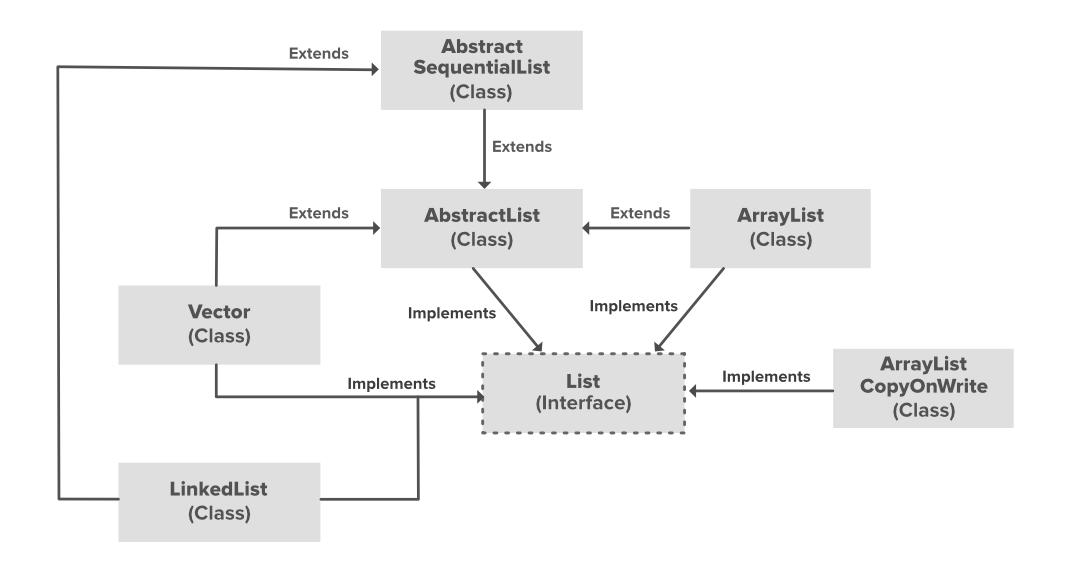泛型集合与数据操作:Java集合框架的深度剖析与高级应用
发布时间: 2024-09-11 04:44:53 阅读量: 86 订阅数: 32 


java基础之集合面试题共4页.pdf.zip

# 1. Java集合框架概述
Java集合框架是Java编程语言中一个重要的组成部分,它为开发人员提供了大量现成的数据结构以及管理这些数据结构的算法。集合框架不仅简化了代码的编写,还提高了代码的可读性和复用性。本章将介绍Java集合框架的基本概念、结构组成以及各个接口和类之间的关系,为深入理解后续章节内容打下坚实的基础。
集合框架提供的主要接口包括List、Set、Queue和Map等。List接口支持有序集合,允许重复元素;Set接口则要求元素唯一,适用于存储无重复元素的集合;Queue接口定义了先进先出(FIFO)的队列操作;而Map接口则存储键值对,用于快速查找。这些接口以及它们的实现类构成了集合框架的核心。例如,ArrayList实现了List接口,而HashMap实现了Map接口。
理解这些基本概念后,开发者可以更好地选择合适的集合类型来适应不同的业务场景,从而提高开发效率和程序性能。接下来,让我们深入探讨泛型集合的原理与实践,以进一步提升我们的代码质量和灵活性。
# 2. ```
# 第二章:泛型集合的原理与实践
## 2.1 泛型的基本概念
### 2.1.1 泛型的引入及其优势
Java 泛型是JDK 1.5版本中引入的一个重要特性,旨在提供编译时类型安全检测机制,它允许在编译时检测到非法的类型操作。泛型的好处主要体现在:
1. **类型安全**:泛型代码可以保证你操作的数据类型安全,减少因类型转换错误而导致的运行时异常。
2. **消除强制类型转换**:使用泛型,编译器会自动进行类型转换,避免了程序运行时的ClassCastException。
3. **提高代码复用性**:泛型可以在创建集合对象时明确指定类型,从而允许复用集合操作类的方法,而不需要为每种类型重载方法。
### 2.1.2 泛型类型参数的定义和使用
泛型是通过类型参数(Type Parameters)来实现的,类型参数可以用于定义类、接口、方法。这些类型参数在使用时必须被具体化。
#### 类型参数的定义
定义一个泛型类或接口时,使用尖括号`< >`定义类型参数,可以指定多个类型参数,以逗号分隔:
```java
public class Box<T> {
private T t;
public void set(T t) {
this.t = t;
}
public T get() {
return t;
}
}
```
在上述例子中,`T`就是一个类型参数。
#### 类型参数的使用
实例化泛型类时,必须指定类型参数的具体类型:
```java
Box<String> stringBox = new Box<>();
stringBox.set("Java泛型示例");
```
对于方法来说,泛型类型参数也可以在方法级别定义:
```java
public <T> void printArray(T[] inputArray) {
for (T element : inputArray) {
System.out.printf("%s ", element);
}
System.out.println();
}
```
在这个例子中,`printArray` 方法接受一个泛型数组作为参数。
## 2.2 常用泛型集合详解
### 2.2.1 List集合及其操作
List接口继承自Collection接口,支持元素的重复,并且维持了元素的插入顺序。List的典型实现包括ArrayList和LinkedList。
#### ArrayList
ArrayList是基于动态数组实现的,它提供了对元素的随机访问能力,可以通过索引快速地访问元素。由于ArrayList内部使用数组实现,所以它适合于快速查找,而不适合于频繁的插入和删除操作。
```java
List<String> list = new ArrayList<>();
list.add("One");
list.add("Two");
list.add("Three");
System.out.println(list.get(1)); // 输出 "Two"
```
#### LinkedList
LinkedList基于双向链表实现,它不仅支持快速的随机访问,还支持高效的插入和删除操作,特别是在列表的两端。
```java
List<String> list = new LinkedList<>();
list.add("One");
list.add("Two");
list.addFirst("Zero"); // 在链表头部添加元素
System.out.println(list.get(1)); // 输出 "Two"
```
### 2.2.2 Set集合及其去重原理
Set接口继承自Collection接口,不允许元素重复。Set的典型实现包括HashSet和TreeSet。
#### HashSet
HashSet基于HashMap实现,不保证集合元素的顺序。它通过哈希表维护元素的唯一性,因此它的时间复杂度通常是O(1)。
```java
Set<String> set = new HashSet<>();
set.add("Apple");
set.add("Banana");
set.add("Apple"); // 不会添加,因为Set不允许重复元素
```
#### TreeSet
TreeSet基于红黑树实现,能够对元素进行排序。它不允许null元素,并且在元素插入时进行自动排序。
```java
Set<String> set = new TreeSet<>();
set.add("Apple");
set.add("Banana");
for (String fruit : set) {
System.out.println(fruit);
}
// 输出可能是 "Apple" 和 "Banana",具体顺序取决于自然排序
```
### 2.2.3 Map集合及其键值对管理
Map接口存储键值对,并且每个键都是唯一的。Map的典型实现包括HashMap和TreeMap。
#### HashMap
HashMap基于散列实现,它根据键的hashCode值存储数据。键的hashCode值决定了对象存储的位置。
```java
Map<String, Integer> map = new HashMap<>();
map.put("Java", 10);
map.put("Python", 15);
System.out.println(map.get("Java")); // 输出 10
```
#### TreeMap
TreeMap基于红黑树实现,能够对键进行排序,从而实现对键值对的自然排序。
```java
Map<String, Integer> map = new TreeMap<>();
map.put("Java", 10);
map.put("Python", 15);
for (Map.Entry<String, Integer> entry : map.entrySet()) {
System.out.println(entry.getKey() + ": " + entry.getValue());
}
// 输出会按照键的自然排序顺序
```
## 2.3 泛型集合的自定义扩展
### 2.3.1 自定义泛型类
自定义泛型类时,可以定义一个或多个类型参数。以下是一个简单的泛型类的定义,它用于存储任意类型的元素:
```java
public class MyGenericClass<T> {
private T data;
public MyGenericClass(T data) {
this.data = data;
}
public T getData() {
return data;
}
public void setData(T data) {
this.data = data;
}
}
```
### 2.3.2 自定义泛型方法和接口
泛型方法可以在没有泛型类的情况下使用泛型。而泛型接口则允许在实现该接口的类中使用泛型。
#### 泛型方法
泛型方法可以在任何类中定义,如下示例定义了一个泛型方法来交换两个值:
```java
public static <T> void swap(T[] array, int i, int j) {
T temp = array[i];
array[i] = array[j];
array[j] = temp;
}
```
#### 泛型接口
泛型接口可以定义成以下形式:
```java
public interface GenericInterface<T> {
void add(T element);
0
0





